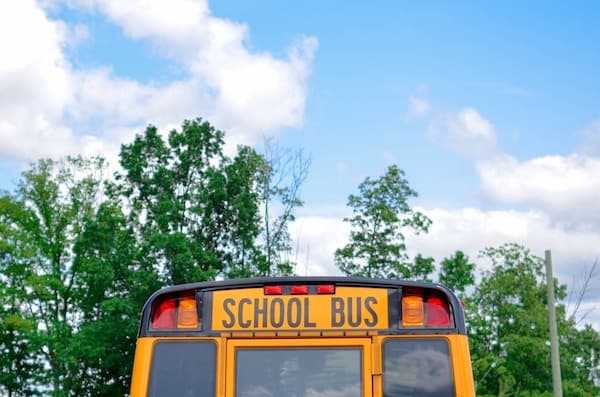As with most years, summer has passed quickly, and most children are back to school. It’s back to a busy routine – and busier roads in a lot of places.
Though OTR drivers don’t pass through residential areas for much of their route, it’s an occasion that requires extra safety awareness. That’s why it’s a good idea to remember some basic rules of the road to follow in and around school zones. To show our readers just how quickly something can happen, take a view of our video below that we obtained from one of our drivers’ dashboard cameras. The Dynamic Driver was obeying all laws, however, a kid riding his bike decided to dart out into oncoming traffic. And not just any oncoming traffic, two lanes of busy traffic including our loaded tractor-trailer! These are sobering remainders of why it’s always important to stay vigilant and alert in school zones OR when you know kids could be present near road ways.
There were 264 school-age children killed in school-transportation-related crashes between 2008 and 2017. Approximately 200 of these children were killed walking or biking, waiting for the bus or riding in another vehicle.
By following some basic guidelines, you can do your part to keep kids safe.
1. Watch Your Speed.
It may sound simple, but slowing down in school areas can make a big difference for drivers of semi-trucks. According to the Utah Department of Transportation, a passenger vehicle weighing 4,000 pounds, traveling under ideal conditions at a speed of 65 miles per hour would take 316 feet to stop (nearly the length of a football field). A fully-loaded tractor-trailer weighing 80,000 pounds traveling under ideal conditions at a speed of 65 miles per hour, however, will take 525 feet to stop (almost the length of two football fields).
Be on the lookout for school zones, which often have much lower speed limits. This is especially the case before and after school. Most school zones are marked with a sign with lights that flash during these time periods.
2. Be Alert for Buses.
It can be frustrating for drivers to be stuck behind a school bus that makes frequent stops. It’s essential, though, that you don’t pass a bus as it’s picking up children to take them to school or drop them off after. It is illegal in every state in this country to pass a bus stopped with its stop arm extended and lights flashing.
Try to stay farther behind a bus than you would another vehicle. This gives you more time to stop when necessary. Many experts point out that the ten feet around a school bus is the most dangerous for children.
3. Stay Alert Near Schools.
Before and after school, a lot of children walk or ride their back to get from one point to another. Not all of them utilize the appropriate crosswalks, making it dangerous for drivers in the area. Be especially alert near schools, and keep your eyes on the road at all times. Follow the signs of school crossing guards, even if you’re in a hurry. Also, if you happen to be driving in a neighborhood around the time children are dismissed from school, watch for kids playing in the street or darting back and forth between yards.
4. Plan Your Route accordingly.
If you know you’re going to be driving near a school around arrival or dismissal time, give yourself extra time to reach your destination. Use major highways and interstates rather than residential routes, even in towns and cities with colleges and/or universities.
Following are some additional back to school safety tips, courtesy of the National Safety Council:
• Don’t block the crosswalk when stopped at a red light or waiting to make a turn, forcing pedestrians to go around you; this could put them in the path of moving traffic.
• In a school zone when flashers are blinking, stop and yield to pedestrians crossing the crosswalk or intersection.
• Don’t honk or rev your engine to scare a pedestrian, even if you have the right of way.
• Never pass a vehicle stopped for pedestrians.
• Always use extreme caution to avoid striking pedestrians wherever they may be, no matter who has the right of way.


Nh88h? A new one in a sea of options. Looks interesting. Is it fun? Is it fair? That’s what I need to know! Let me see what’s on nh88h.